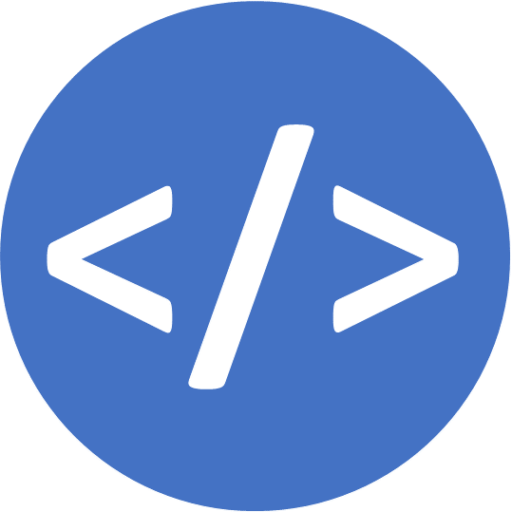When it comes to software testing, it’s good to have a structured plan and strategy. To find possible software errors early on, it only makes sense to integrate testing into the development process as soon as possible. In Part I we looked at exactly that and some of today’s best practices of software testing.
▶️ See Part I: Software Testing Best Practices
That being said, now let’s take a look at some of the software testing trends 2023/2024 to get a better understanding of what we’re dealing with.
Software Testing: Automation with AI and Machine Learning
Part of the software testing trends is the integration of AI in software tests. It can improve the precision and effectiveness of testing procedures, leading to a reduction in the duration and effort of manual testing.
In the realm of automated software testing, integrating AI involves leveraging statistics-based machine learning (ML) techniques. ML serves as a technology for recognizing patterns, utilizing algorithms to identify patterns that can foresee future trends and issues. ML tools are proficient at processing extensive volumes of data and information, identifying predictive patterns that would pose significant challenges for human perception. Subsequently, these tools highlight discrepancies in patterns, necessitating further analysis and corrective measures.
Another advantage of AI-driven test automation is that it can save money. Instead of assembling large teams to oversee and manage automated tests, a small group of specialists can efficiently configure AI automation testing tools. These AI testing tools operate within a cloud-based environment, which proves to be more cost-effective compared to on-premises software. This cost-effectiveness stems from the fact that software maintenance is the responsibility of the software owners, not the users, eliminating maintenance costs.
Trends of software testing automation with AI
- Exploratory Testing
Initially, Exploratory Testing couldn’t be automated, but now, some organizations train self-learning testing bots to watch human testers find defects. These bots learn and improve over time, making exploratory testing faster.
- Spidering AI
A common AI automation method is using machine learning to automatically generate tests through “spidering.” AI testing apps crawl the application, gather data, and detect patterns and defects. This speeds up the fixing process.
- Self-Healing Scripts
AI in test automation offers self-healing test scripts, enhancing quality assurance. AI tools can automatically update scripts when a UI change occurs, distinguishing between ‘change’ and ‘bug’ more effectively than manual testing.
Here are a few advantages of automated testing:
- Speedier test execution
- Wider test coverage
- Enhanced test precision
- Reduced human labor
- Elevated testing frequency
Low-code method
This method allows for the customization of applications without the necessity for programming. Major enterprise application providers, such as SAP, are transitioning flexibility from the code level to the configuration level. Companies will require solutions for testing low-code projects in the future. The most straightforward way to accomplish this is by utilizing a test automation platform that also adheres to a low-code approach.
But AI automation also has its limitations. While AI can excel in certain areas where manual testing is inferior in terms of speed and repetition, the reverse is also true. Manual testing has advantages that automation can’t beat, which underscores the importance of finding a balance between the two approaches.
|💡Key Differences between Software Developers – Junior/Middle/Senior & Lead
Cloud Testing
Cloud Testing involves assessing a software application by leveraging cloud computing services. Its aim is to thoroughly evaluate software, encompassing both functional and non-functional aspects, through the utilization of cloud computing resources. This approach guarantees swift availability, scalability, and flexibility, ultimately saving time and reducing costs associated with software testing.
`
Are there different types of cloud testing?
For example: Scalability Testing utilizes the cloud’s dynamic and adaptable characteristics, enabling a flexible approach to your testing. This method assesses enhancements that leverage the elastic provisioning and scaling capabilities of cloud resources, facilitating on-the-fly adjustments as needed.
On the other hand there is Browser Performance Testing. It is vital for ensuring consistent functionality across various browsers. It allows you to evaluate the performance of web-based applications, aligning them with evolving user behaviors. This testing ensures uniform display and operation of web applications on different browsers, operating systems, and devices.
|💡Choosing Embedded Teams | An Alternative to Traditional Outsourcing
Regression Testing
Another software testing trend is regression testing, a software testing phase following a code update, ensures the absence of new bugs resulting from the update. This precaution is necessary because fresh code may introduce new logic that clashes with the existing code, potentially causing defects. QA teams typically maintain a set of regression test cases for critical features, which they re-run whenever code changes occur, optimizing efficiency.
In cases where a project lacks a version control system, pinpointing the precise component responsible for a bug can be challenging. However, regression testing provides clear insight into the bug’s origin, facilitating more effective troubleshooting. Essentially, it serves as a periodic health assessment for the software. Given its repetitive nature, regression testing lends itself well to automation.
Scriptless Automation Testing
Scriptless testing automates tests using tools, not scripts, primarily for UI interactions. It has limitations based on the underlying framework, such as difficulty with captchas or barcodes. Some tools allow script flexibility for complex cases, but each tool has its unique capabilities and constraints.
A scriptless testing tool captures a tester’s actions as they navigate through application screens, replicating the test steps that would otherwise require manual script creation. However, scriptless testing shares the limitations of the underlying test framework it relies upon, meaning it may not effectively test elements such as captchas or barcodes.
Scriptless Testing Tools
Examples of Scriptless Testing tools include Selenium IDE and TOSCA.
|💡The True Cost of Hiring In-House vs. Outsourcing in Software Development
Summary
The coming years will continue to pose challenges for development companies. Fast innovation cycles need to be mastered while at the same time guaranteeing high software quality and security. To make that happen, test automation and other mentioned methods will play an essential role in the future. What other software testing trends could be coming our way? We will find out.
The software industry remains exciting, challenging, so if you need qualified developers to drive your software projects forward, feel welcome to get in touch with us.
|💡Check Out: Our In-Depth Guide on how to hire Remote Developers

